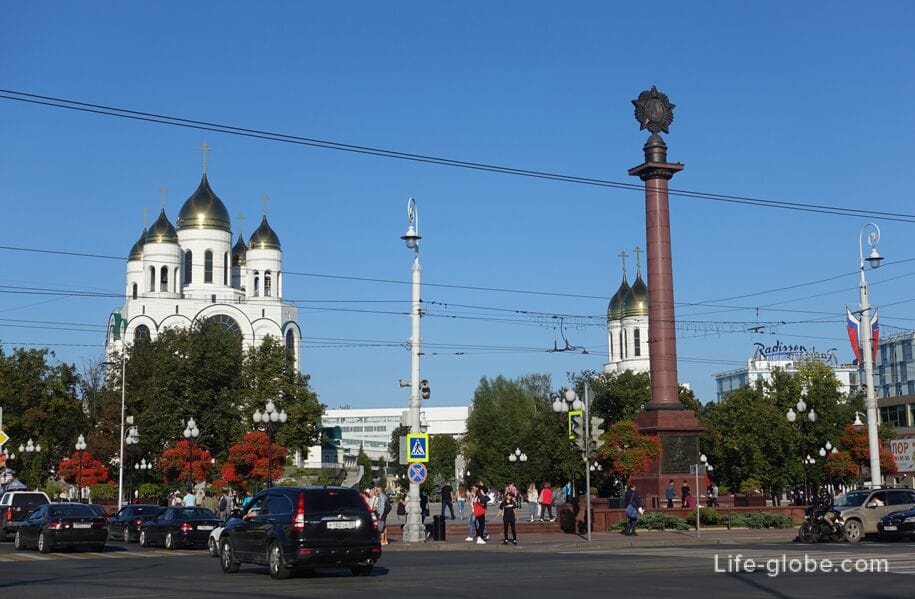
Apartment-museum Altes House in Kaliningrad (apartment-museum Altes Haus) is a museum showing the situation of apartments in East Prussia.
The recreated authentic interior of the apartment makes it possible to fully feel the spirit of the old Konigsberg and see with your own eyes how the life of the citizens of the 19th - early 20th centuries flowed.
The Altes Haus Museum apartment is located in the very center of Kaliningrad, in the old district of Amalienau, in the part where multi-apartment housing was built for middle-class citizens.
The building in which the museum apartment is located was built in 1912 as an apartment building and was located on Schreterstrasse Street (now Krasnaya Street).
In those years, the family of the merchant and the owner of the grocery store Gustav Grossmann lived in the apartment. The store was located on the corner of the same house, which was very convenient. Currently, a grocery store is located on the same place where the Grossmann family store once stood.
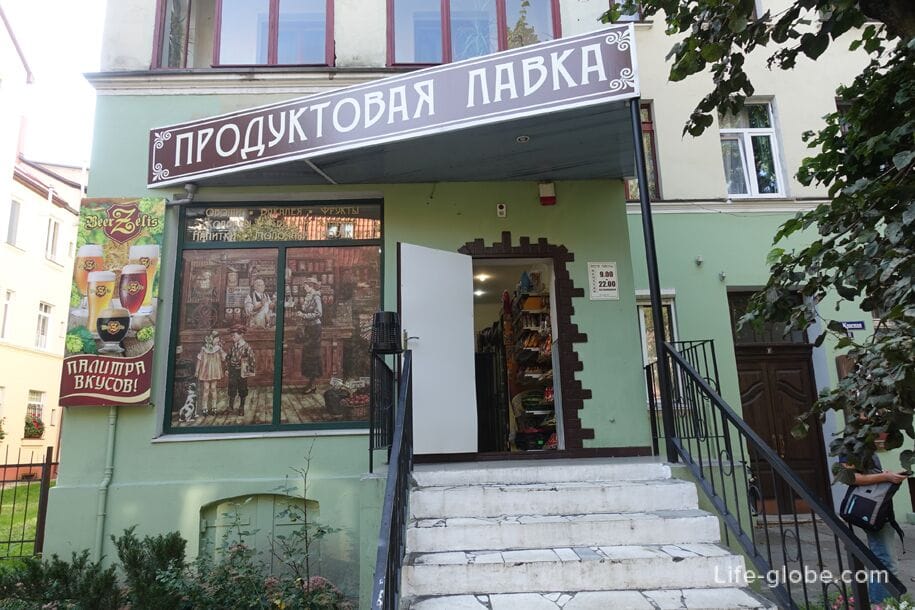
In the post-war years, the apartment became communal, for three families, which it was until 2014. After the family was settled, and the apartment was bought and turned into a museum-apartment Altes House.
Currently, the apartment museum shows the family life of Gustav Grossmann's family.
Most of the museum's exhibits are authentic items of that era, found in old attics, bought at flea markets and European auctions. Some items were recreated from old photographs, while others were collected from several old things no longer usable (fireplace).
However, some parts of the apartment are still preserved from pre-war times, for example: ceiling sockets for chandeliers, hinges, handles and door locks.
The apartment has an area of 80 square meters. In the pre-war years, such apartments were intended for one or a maximum of two people.
In the apartment Altes House: hall (living room, study), bedroom, kitchen, bathroom, hallway and storage room.
The hall-living room is the heart of the apartment, the place where we had lunch and dinner, worked, received guests and just spent time in the evenings with family.
Gustav Grossmann's workplace. Near the desktop you can see a real Konigsberg chair. This is a typically male chair, such chairs were intended for the convenience of seating men. Ladies did not sit on such chairs.
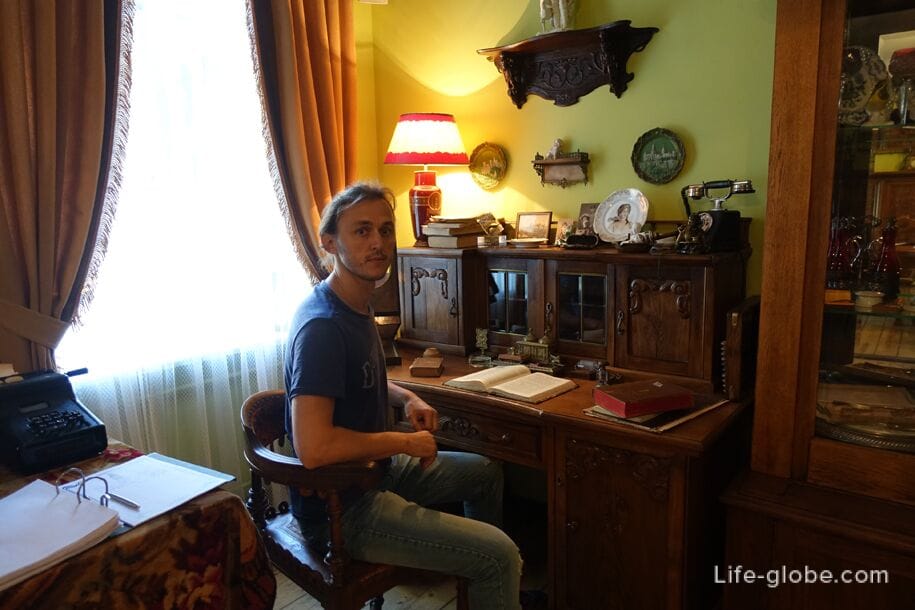
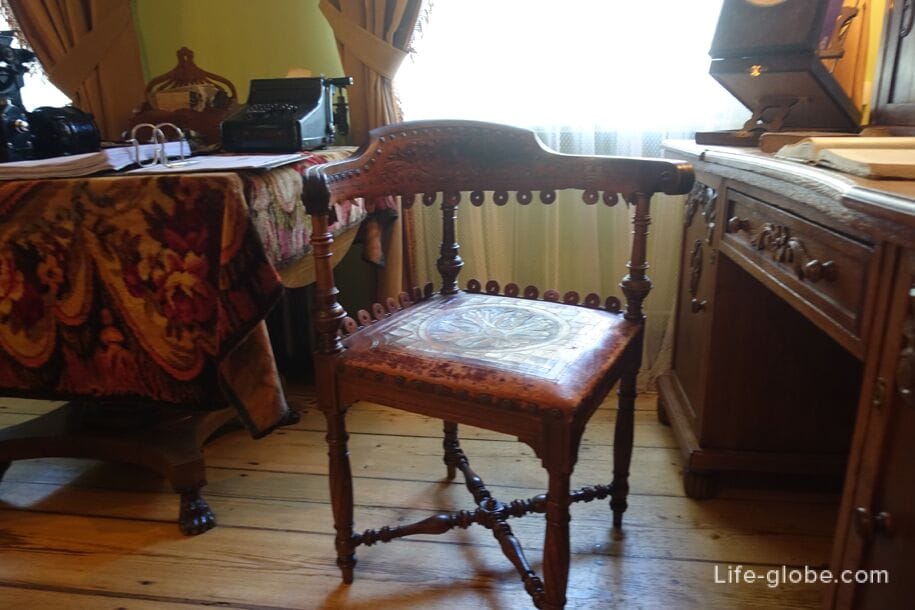
A woman's chair. It has a wide seating area. The hems of women's dresses were voluminous, so the chairs were made wide so that the lady felt comfortable in them. Often the chairs were even without one armrest.
Next to the women's chair is a gramophone, 1906, an Italian factory.
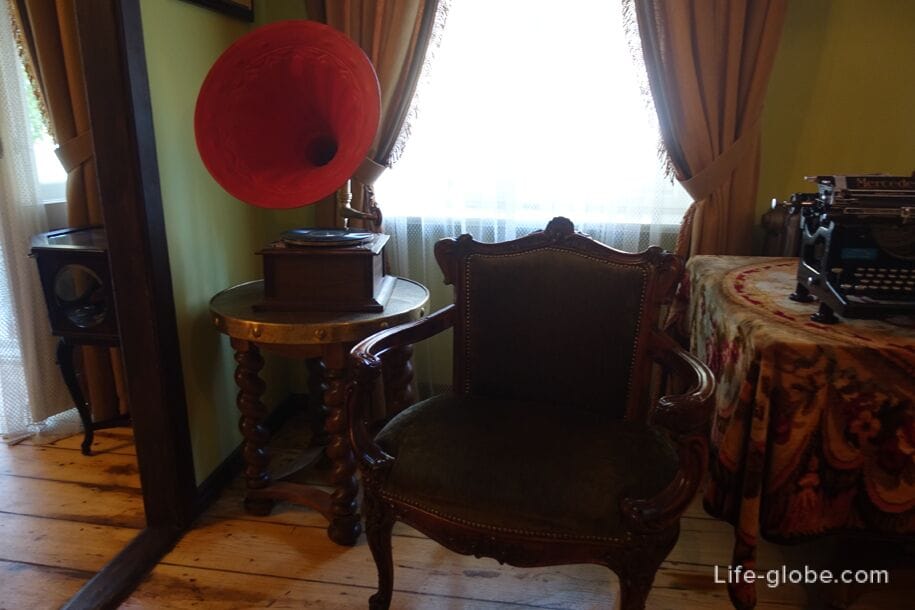
Smoking accessories, in particular a collection of pipes. These collections of pipes were not intended for a circle of men, they belonged to one smoker. Each tube is made of different materials and has a different length, which allows you to reveal all the taste qualities of tobacco.
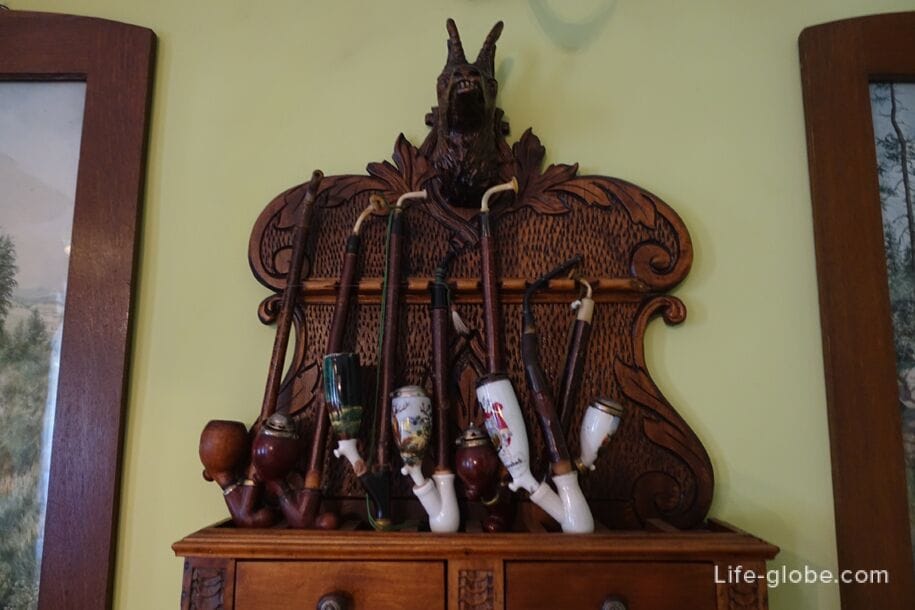
A wallet for storing money.
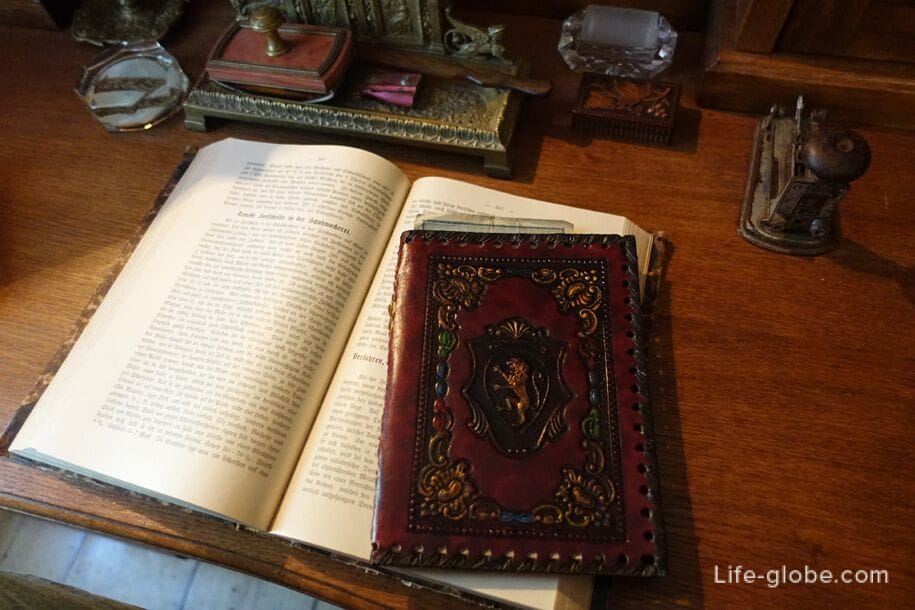
1000 stamps of 1910. The car in those years, just rolled off the assembly line, cost about 700 measures.
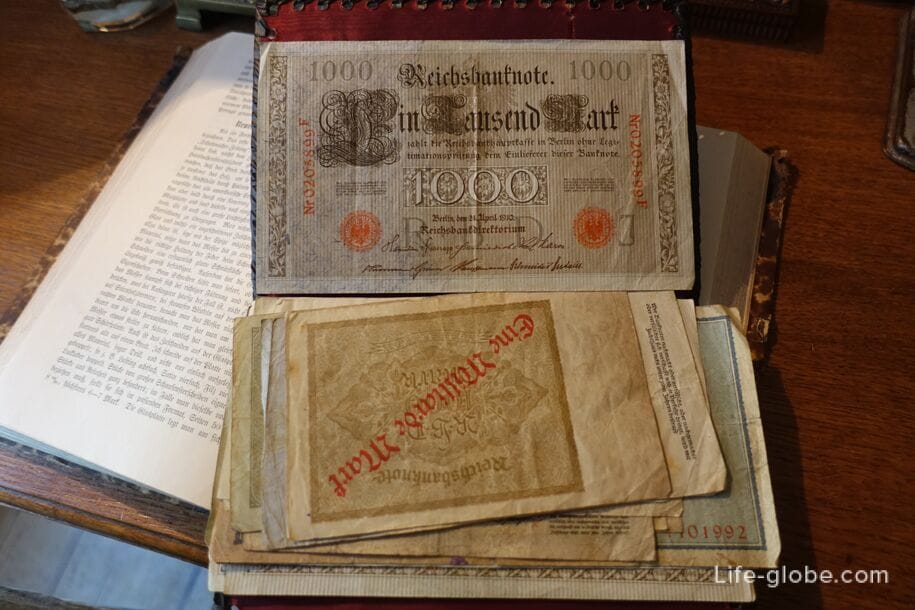
1000 marks, December 22. There is a severe economic crisis in the country, terrible inflation. The red stamp on the bill indicates that it has been reissued, and it is no longer 1000 marks - it is a billion. A loaf of bread at that time cost 250 billion, a foot of meat - 900 billion, a mug of beer - 52 billion.
With such bills, workers were literally given a salary in bags twice a day, after which time was necessarily set aside so that they could go to the store and shop, since the situation was such that in the evening it was possible to buy nothing at all with the salary paid in the morning. At that time, an ordinary wheelbarrow served as a purse, in which money was loaded and taken to the nearest grocery store.
Then they even stopped printing money from both sides. The money was one-sided - one side was sealed, while the other remained clean.
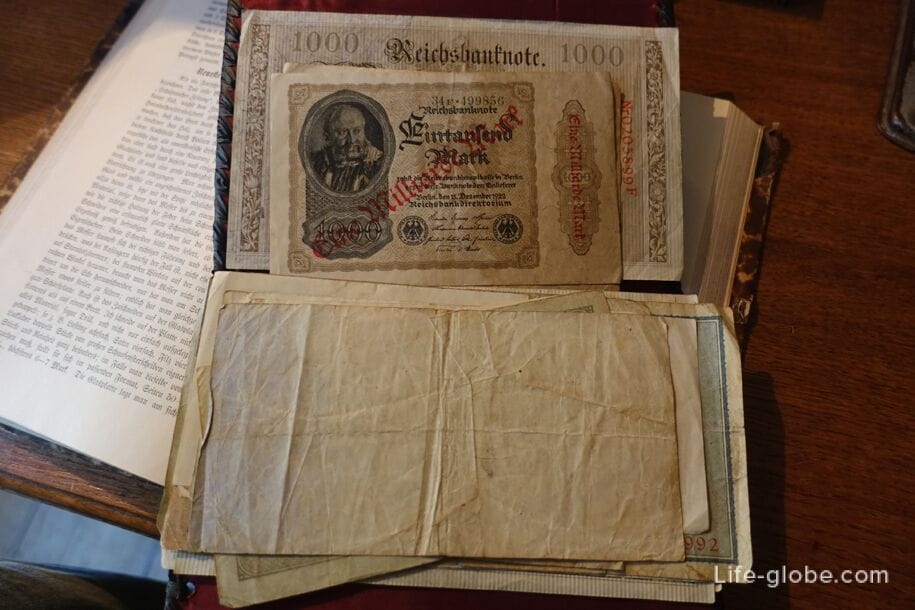
A cabinet with glass doors is a home showcase. In such cabinets they kept valuables, family heirlooms, some souvenirs and all those things that they wanted to flaunt to the guests.
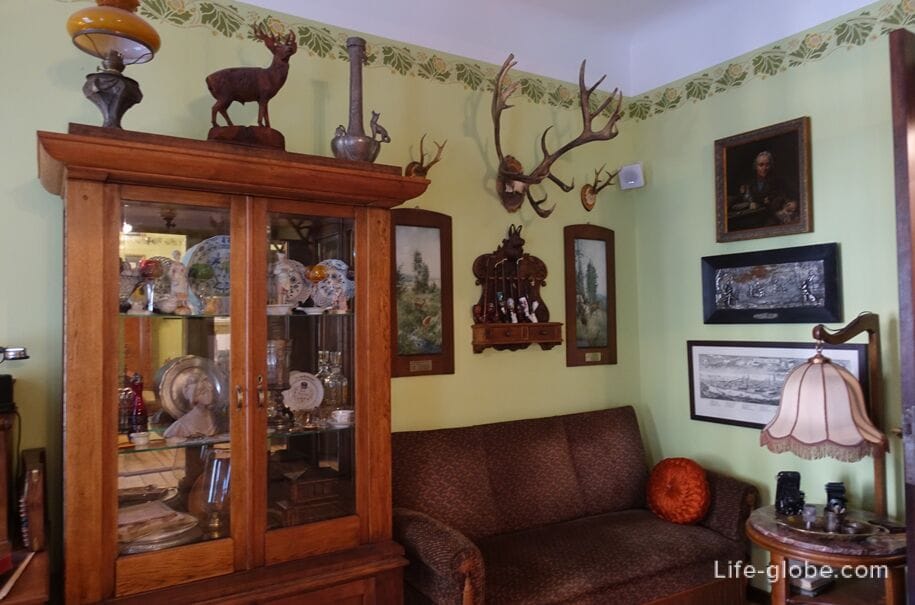
Mercedes typewriter. This company had nothing to do with the production of cars, it was engaged in the production of office equipment. The museum presents the world's first electromechanical typewriter with an electric drive. Such typewriters began to be produced in 1921.
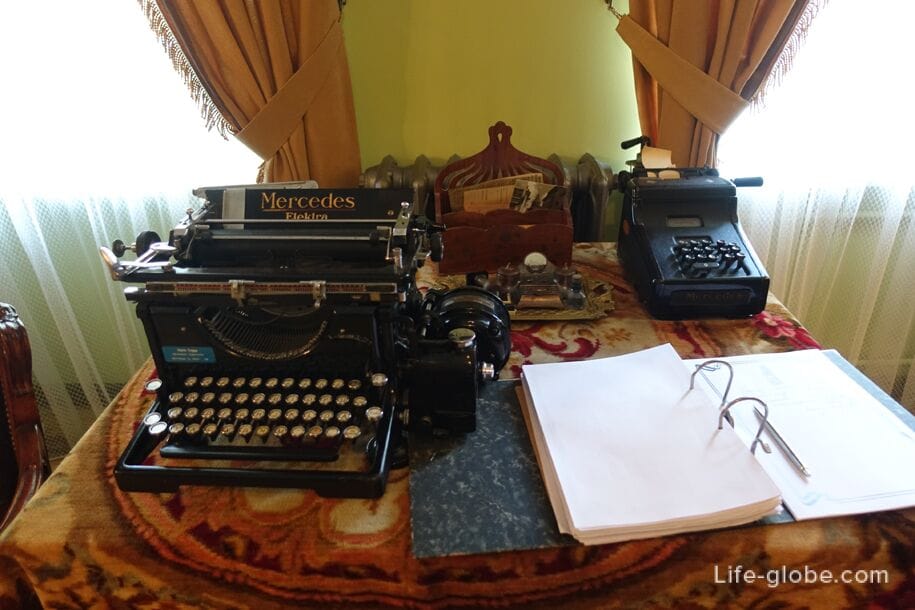
The chandelier in this part of the room is originally a gas lamp. Then this lamp was converted into an electric one.
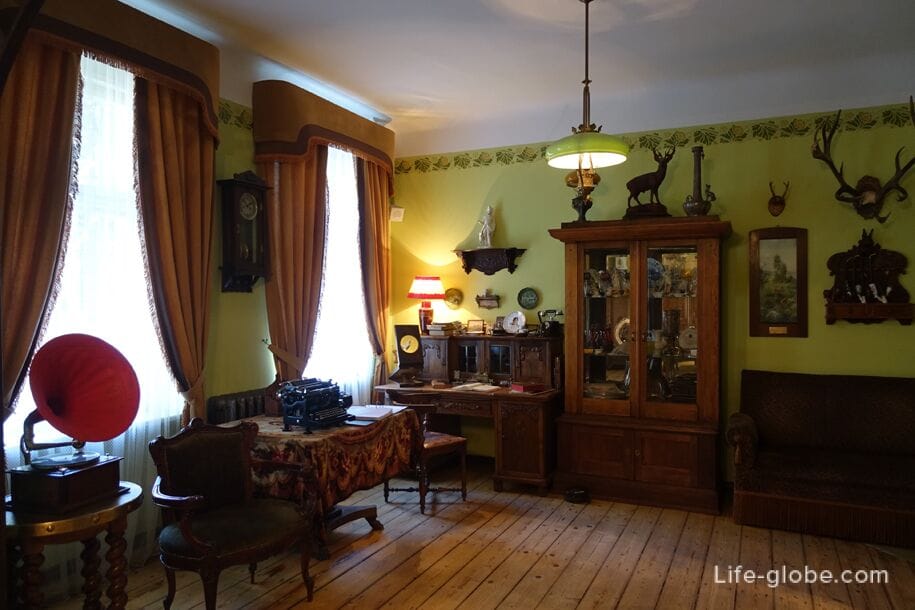
The second part of the room - the living room-dining room, was separated from the part of the room-the office - by an opening glass partition.
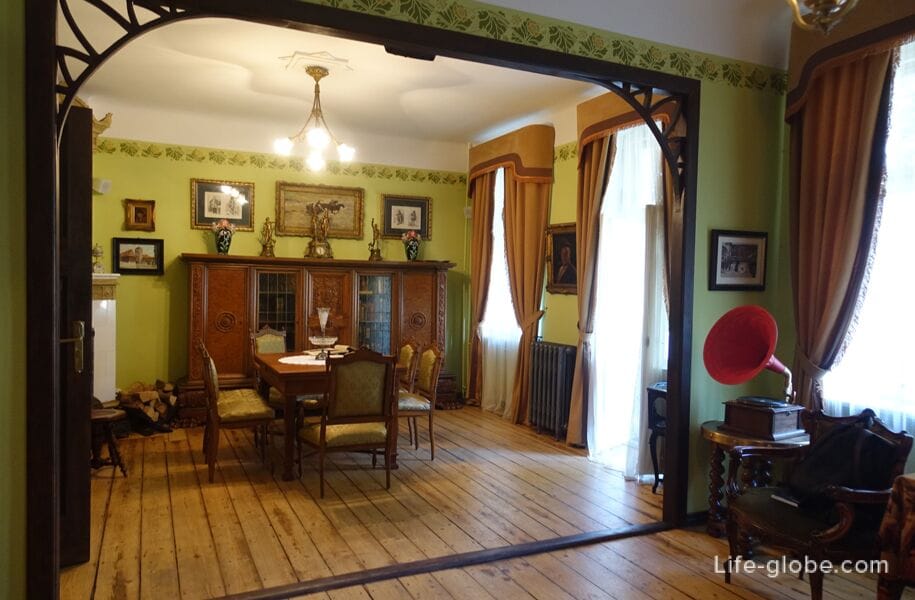
In this part of the room you can see a dining table, a Dutch oven, with which the rooms were heated. There was such a stove in every room. The furnace that can be seen in the museum was assembled from three furnaces.
The piano is the work of the Berlin master Georg Hoffmann.
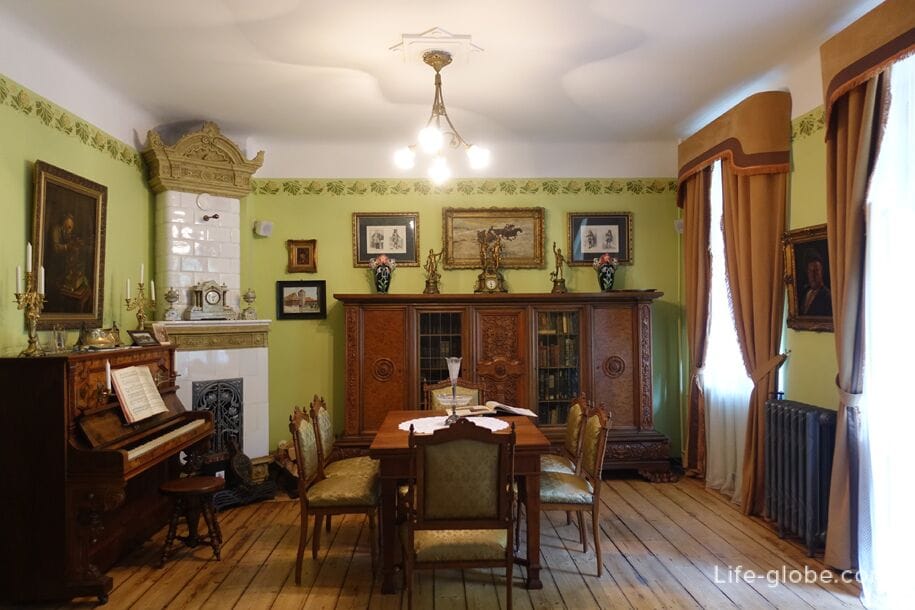

Sleeping set, bed linen (pillowcases, bedspreads) - German manufacturers. But the elements of upper and lower clothing "came" from Paris, the end of the 19th - beginning of the 20th centuries.
At that time, ladies wore up to 6 layers of underwear only. The process of dressing was quite long and complicated, which was almost impossible for the lady herself to cope with (especially with a corset), so a rare lady managed without an assistant-maid.
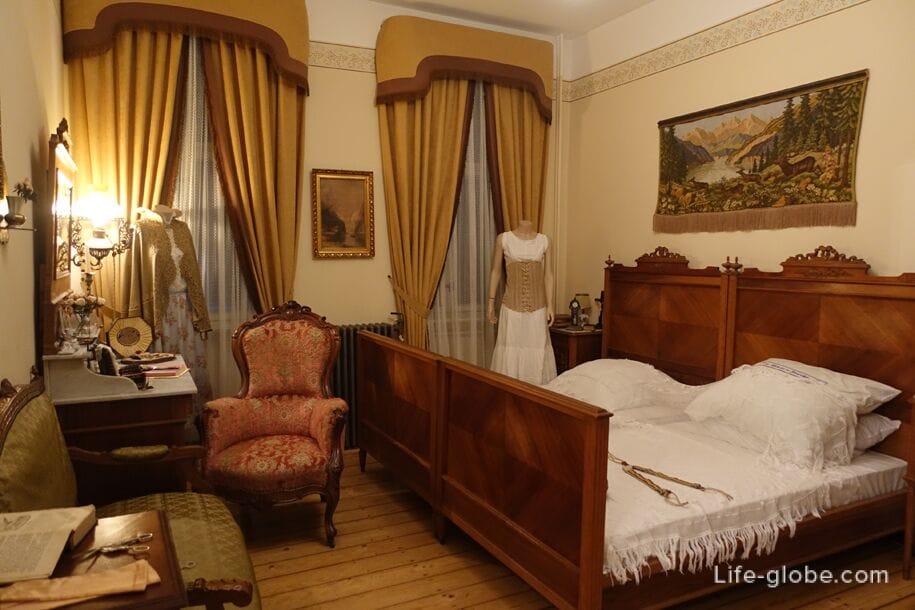

Mrs. Grossmann's dressing table. Marble countertops were made for the purpose that in those days a washbasin was built into the countertop of dressing tables.
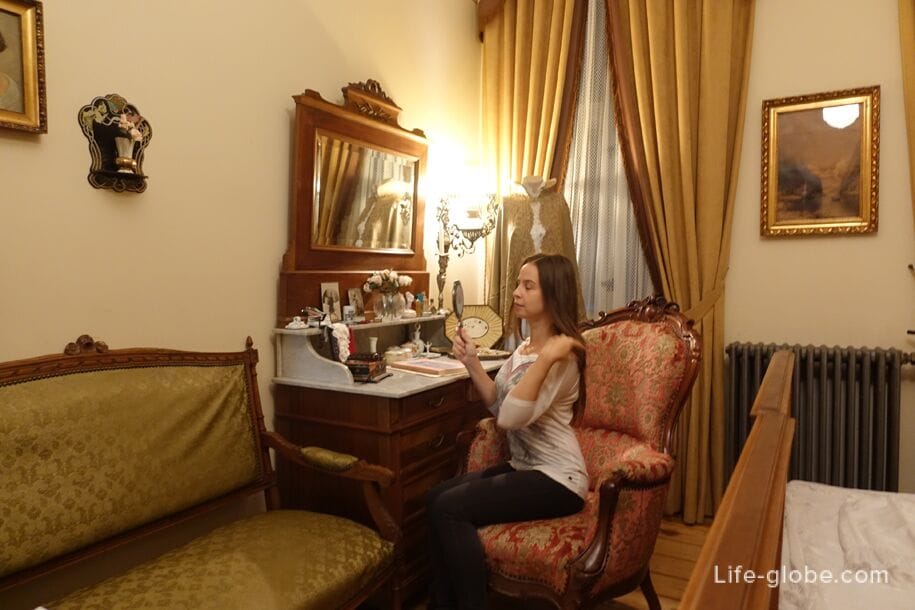
A very miniature handbag. This is an ordinary handbag that was used in everyday life. It was believed that the smaller the purse, the wealthier the lady, because such a lady was accompanied by a servant, and she did not need to carry things with her in a large bag. In this regard, pillboxes, perfume bottles, matchboxes and other ladies' accessories were made very small.

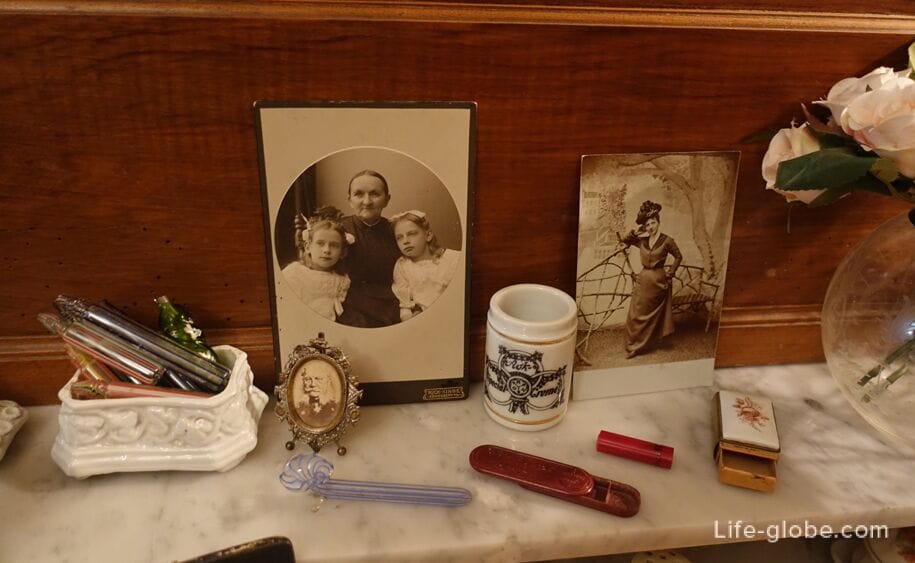
Manicure set
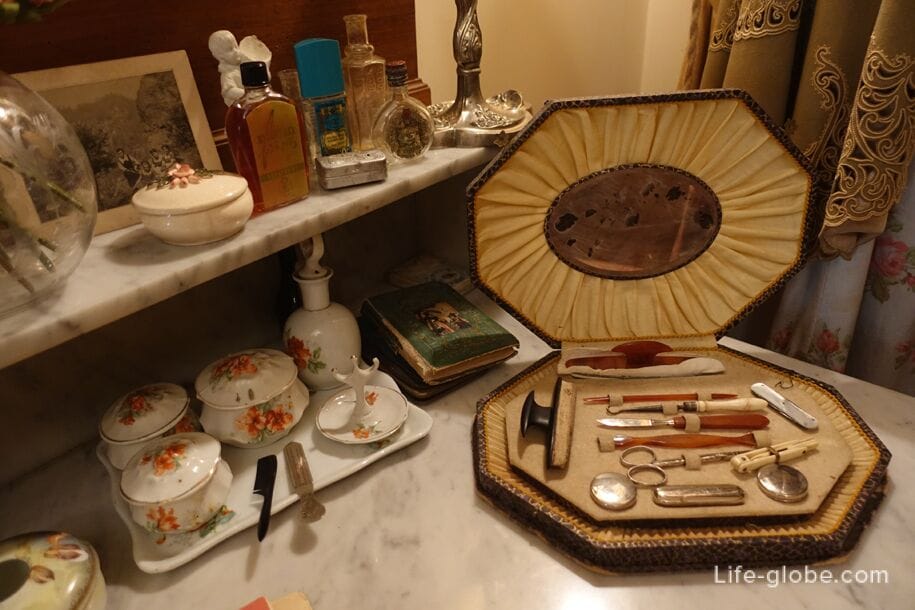
Combs and hair tongs

Legendary scissors for needlework. For other purposes, such scissors were very often used by maids when they helped to lace a corset. The loops in the corsets were very small, and there were no plastic tips for the laces at that time, and with these very scissors it was very convenient to pick up the lacing of corsets.
But scissors have gained wide popularity in connection with the stork depicted on them. Hans Christian Andersen's fairy tale "The Stork" became the progenitor of the belief that this bird brings children.
In those days, they did all sorts of things with the image of a stork. And the tradition of giving such scissors to newlyweds for a wedding with the wishes of the birth of heirs, has firmly entered the lives of local residents of those times.
Later, when the couple found out that Maly would soon appear in their family, the scissors were installed in a prominent place in the living room (on the piano, chest of drawers, etc.), as a sign of notifying guests and loved ones that the hostess was in a position. Talking out loud about a lady's pregnancy or asking questions about when the couple will have children and whether there are any such plans at all was considered bad form.

There was no lunch in such small kitchens, food was served in the dining room, and in the kitchens the cooks only cooked food.


The soul of the kitchen is its stove, the original pre-war stove of the late 19th century. Such stoves were heated daily, the ash went down into the ash pan located at the bottom of the stove, which also had to be cleaned daily.
The surface of the plate was made of cast iron. The entire surface warmed up more or less evenly, so that it was possible to cook over the entire surface of the stove.
The highest temperature was in a ladle designed for roasting coffee beans. The process of roasting the beans was very long, sometimes it took a whole day, and, like this, turning the handle of the ladle, it was necessary to roast coffee beans for a long time.
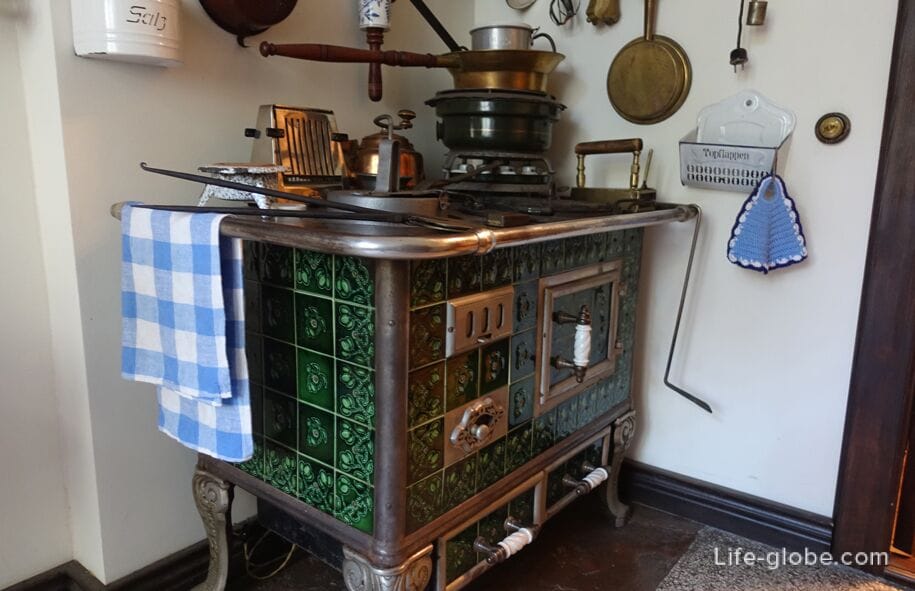
Pre-war double sink. In the upper sink, dirty dishes were soaked in detergent powders (for a day or even more), after which they were wiped dry without rinsing. Soap, sand, soda were also used. In the lower sink, when the upper one was occupied, it was possible to quickly rinse something, for example, hands, cups, fruits, etc.
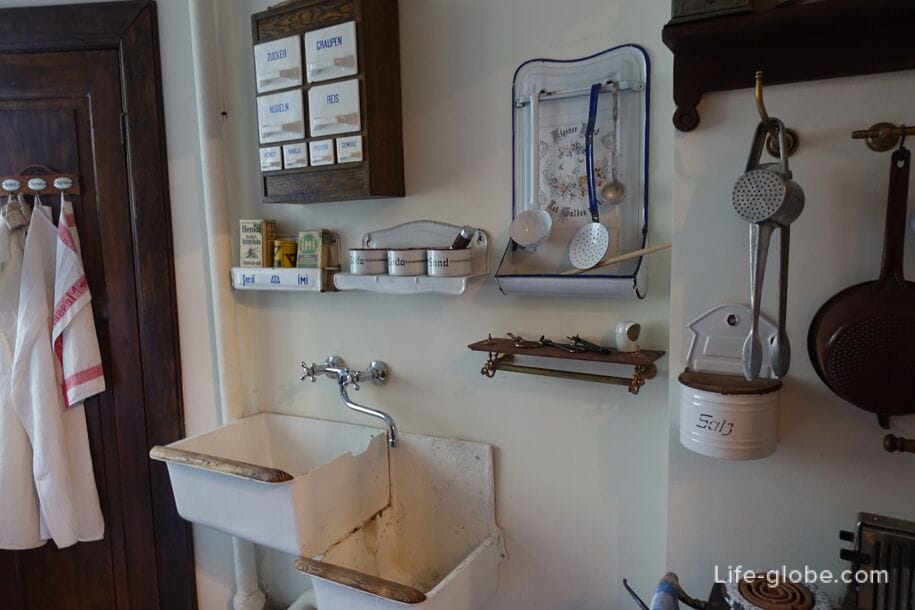
The museum's kitchens feature an abundance of kitchen utensils: for dough, mashed potatoes, baking pies and sweets, waffle irons, a toaster, a juicer, a nutcracker, a potato peeler, a bread slicer, cups for men with moustaches, knives, scissors, and many other various items designed for cooking and eating. The number of such specialized items could reach up to several dozen.
The food was not touched by hands, so there were special devices for cutting off the top of the egg, cutting grapes from the bunch, squeezing out lemon slices, etc.

There were no refrigerators yet. In Europe, cold storerooms were common in residential buildings. In such storerooms, the wall facing the street was much thinner than the main carrier, from which, in the cold season, in such rooms, it was possible to store ready-made perishable food or products for some time. In the summer, the products were carried to the basements, where there was even more or less suitable temperature.
Also, "glaciers" were used to preserve the products. Small containers in which ice of natural origin was laid. The ice melted, the water flowed into a special lower compartment, after which the water was drained.
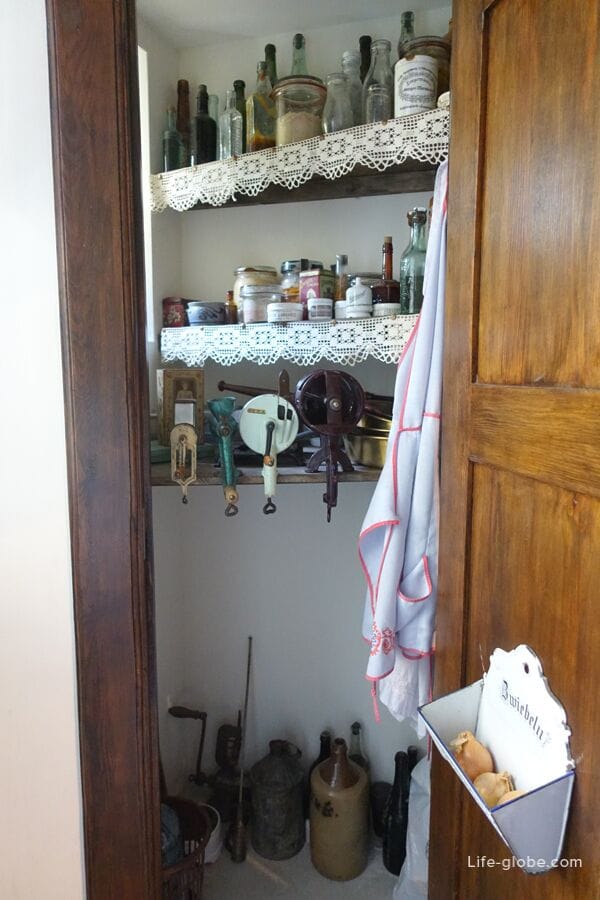
Wall-mounted "notebook" for the cook. During cooking, if some products run out, you could just move the appropriate division and already the maid, who will then go to the store, will just look into the kitchen and will know what products and in what quantity you need to buy.
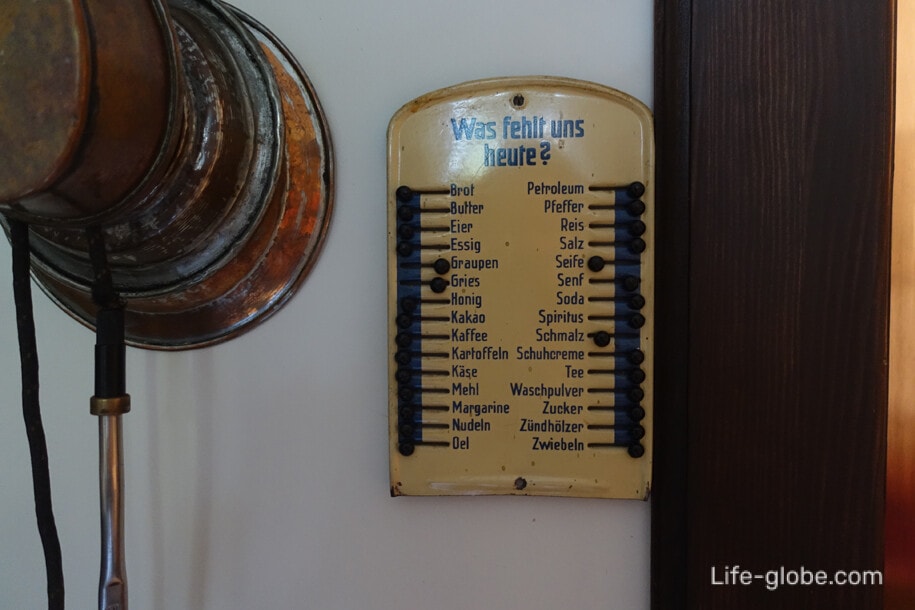
In the hallway there are several canes, including a wooden men's walking stick on which the gentlemen attached commemorative badges from their travels, with the names of some cities and tourist routes. Thus, they let everyone around them know what avid travelers they were. Similar badges are still in use in Bavaria.
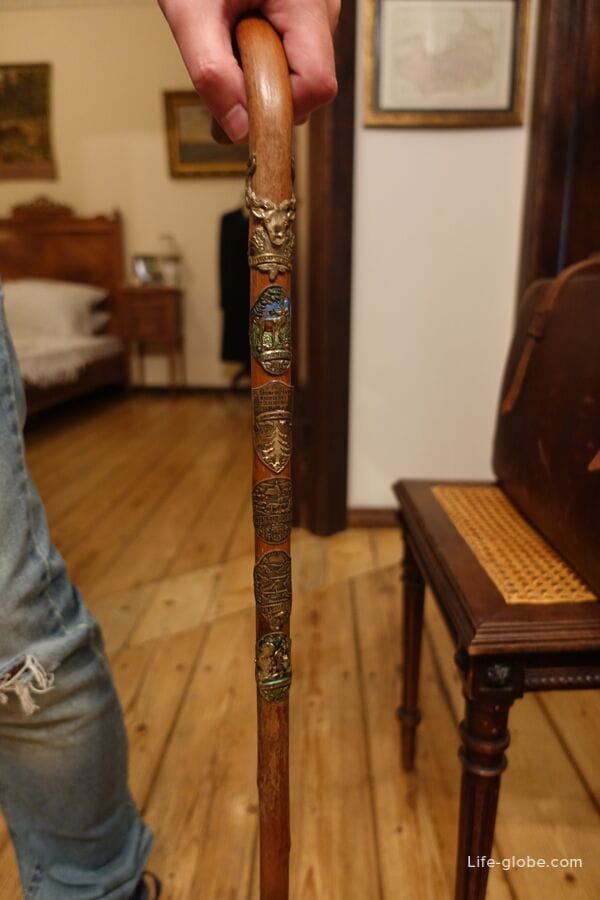
A small and light ladies' walking stick. For a walk, ladies always took with them either such canes or umbrellas.
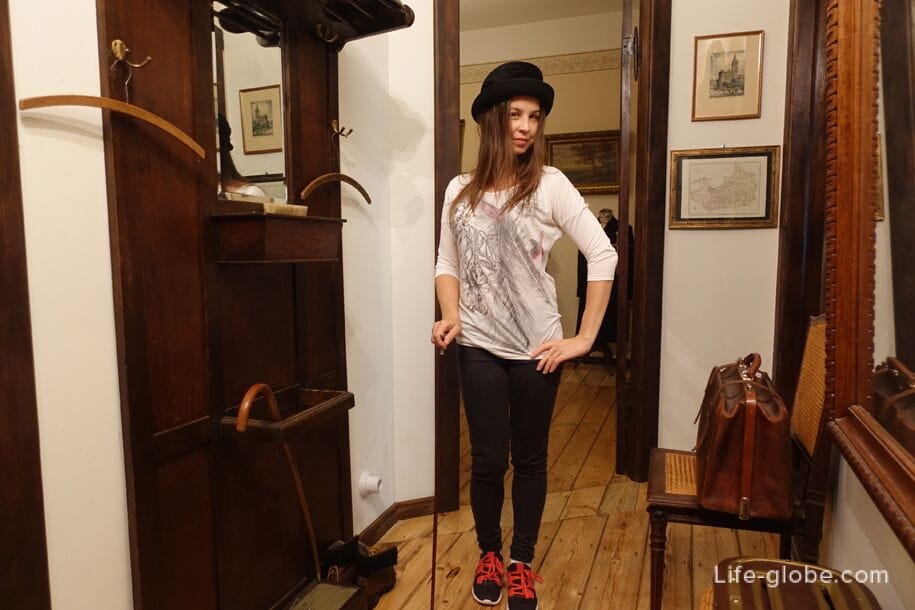

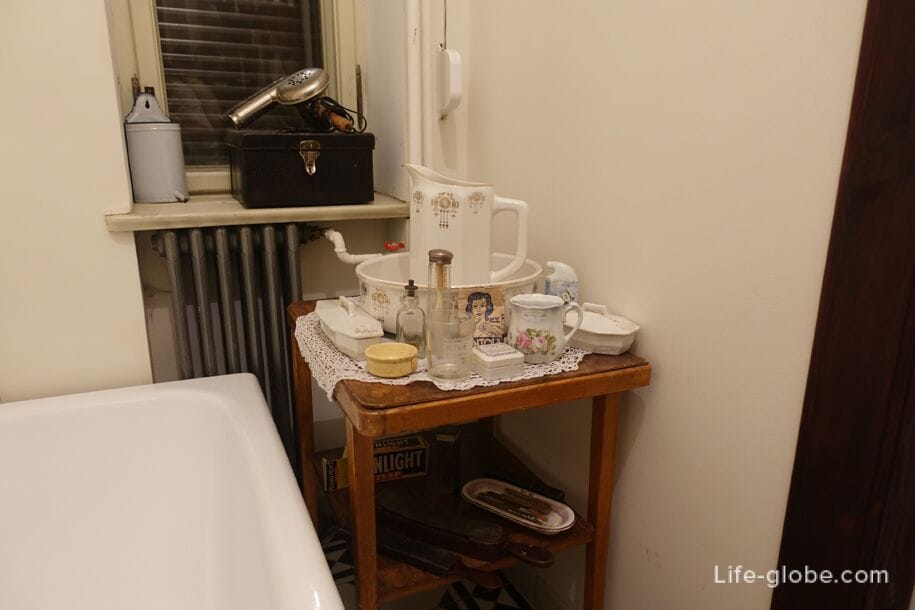
In the former storeroom of the apartment there is a souvenir department of the museum, where you can buy magnets, plates, brochures, books, etc.
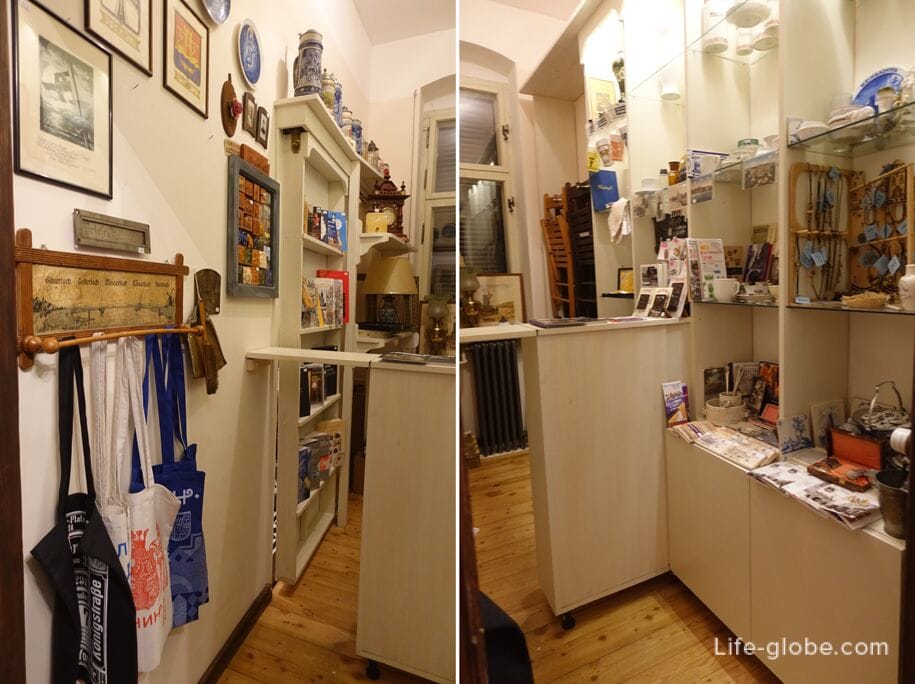
Address of the Altes Haus apartment Museum: the museum is located in the center of Kaliningrad, at 11 Krasnaya Street, Kaliningrad.
Visit to the Altes Haus apartment Museum: a visit to the museum is possible with an excursion. You can find out the time of excursions and the cost of tickets on the official website of the museum.
After the tour, there will be time to take interesting photos with personal participation, examine everything in more detail, feel and study.
Excursion to the Altes Haus museum-apartment:
Official website of the Altes Haus Apartment Museum: alteshaus
The Poplavok Pond and the former district of Konigsberg Amalienau is one of the oldest and well-preserved German districts of the city of Kaliningrad.
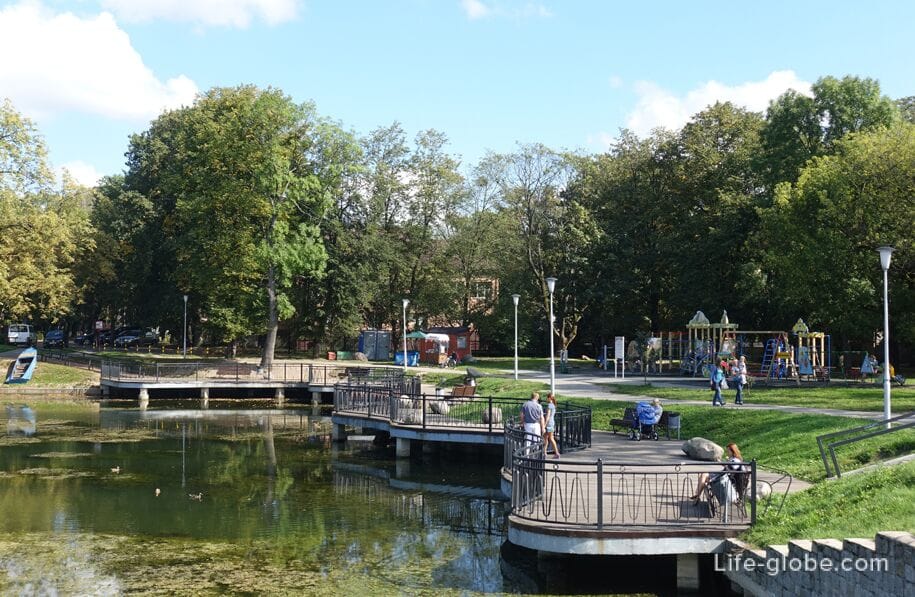
You can visit the Amalienau area on your own or with one of the excursions from Kaliningrad guides:
Hufen is a historic district of Konigsberg.
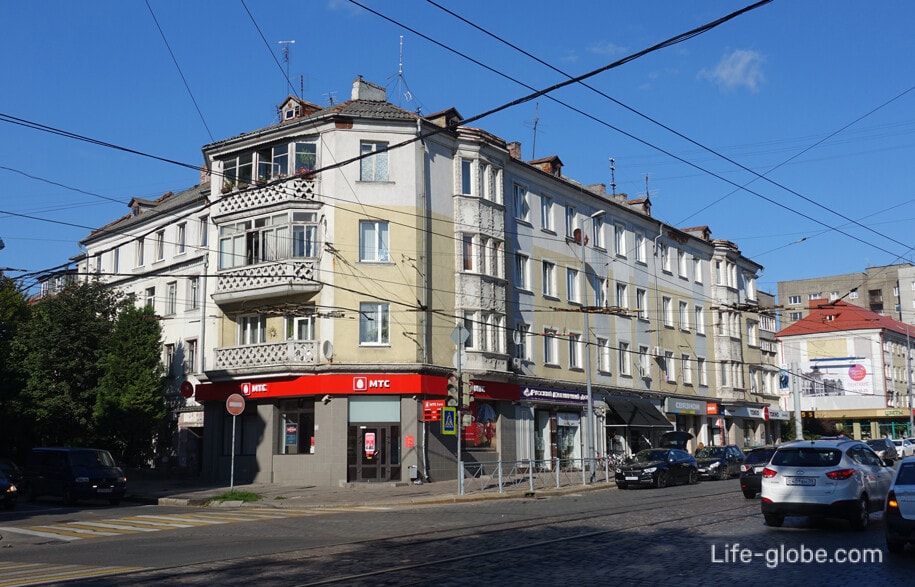
You can visit the Hufen district on your own or with excursions from a Kaliningrad guide:
Kaliningrad Zoo is one of the oldest and largest zoos in Russia.
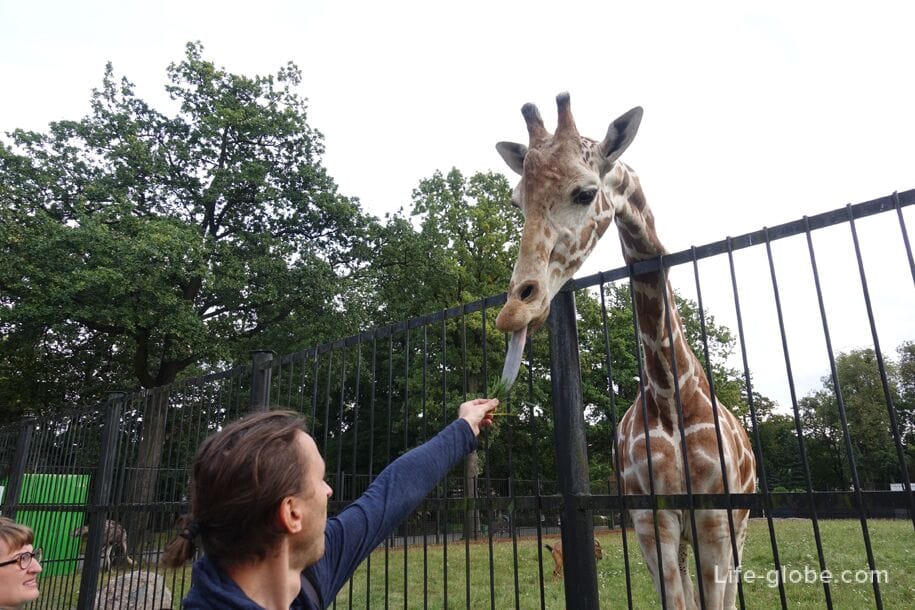
Kaliningrad Central Park (formerly Kalinin Park) is one of the parks of the city of Kaliningrad.
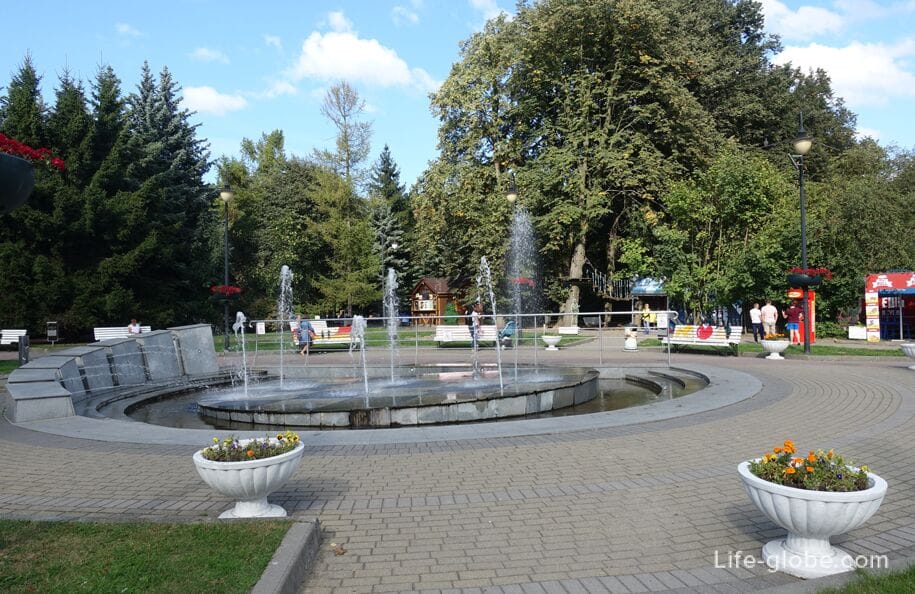
Victory Square is the central square of Kaliningrad.
